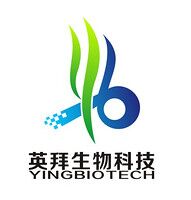上皮間質細胞轉化 ChIP PCR 芯片 Epithelial to Mesenchymal Transition (EMT) ChIP PCR Array

上皮間質細胞轉化 ChIP PCR 芯片 Epithelial to Mesenchymal Transition (EMT) ChIP PCR Array
上皮間質細胞轉化 ChIP PCR 芯片Epithelial to Mesenchymal Transition (EMT) ChIP PCR Array
運費 ¥0.00
| 地區: | 上海 |
| 簡介: | Epithelial to Mesenchymal Transition (EMT) ChIP PCR Array |
| 提供商: | SAB |
| 服務名稱: | Epithelial to Mesenchymal Transition (EMT) ChIP PCR Array |
Genes Down-Regulated During EMT: CAV2, CDH1 (E-cadherin), DSP, FGFBP1, IL1RN, KRT19, MITF, MST1R, NUDT13, PPPDE2, RGS2, SPP1 (Osteopontin), TFPI2, TSPAN13. Genes with Known Histone Modifications during EMT: Increased H3K4me3: AHNAK, AKT1, BMP1, CALD1, CAV2, CDH2 (N-cadherin), CTNNB1, FN1, FZD7, GNG11, GSK3B, IGFBP4, ILK, ITGA5, MAP1B, MITF, MMP2 (Gelatinase A), RGS2, SERPINE1 (PAI-1), SNAI1, SNAI2, SPARC, TCF4, TGFB1, TGFB2, TGFB3, TIMP1, TMEFF1, TSPAN13, VIM, VPS13A, WNT5A. Decreased H3K27me3: DSP, FGFBP1, GSC, IL1RN. Differentiation & Development: AKT1, BMP1, BMP2, BMP7, COL3A1, COL5A2, CTNNB1, DSP, ERBB3, F11R, FOXC2, FZD7, GSC, KRT14, MITF, MST1R, NODAL, NOTCH1, PTP4A1, SMAD2, SNAI1, SNAI2, SOX10, TGFB2, TGFB3, TMEFF1, TWIST1, VCAN, WNT11, WNT5A, WNT5B. Morphogenesis: CTNNB1, FOXC2, PPP3R1, RAC1, SMAD2, SNAI1, SOX10, TGFB1, TGFB2, TGFB3, TWIST1, WNT11, WNT5A. Cell Growth & Proliferation: AKT1, BMP1, BMP2, BMP7, CAV2, CTNNB1, EGFR, ERBB3, FGFBP1, FOXC2, HIF1A, IGFBP4, ILK, MST1R, NODAL, PDGFRB, TGFB1, TGFB2, TGFB3, TIMP1, VCAN. Migration & Motility: CALD1, CAV2, EGFR, FN1, ITGB1, MSN, MST1R, NODAL, PDGFRB, RAC1, STAT3, TGFB1, VIM. Cytoskeleton: CAV2, KRT7, MAP1B, PLEK2, RAC1, VIM. Extracellular Matrix & Cell Adhesion: BMP1, BMP2, BMP7, CDH1 (E-cadherin), CDH2 (N-cadherin), COL1A2, COL3A1, COL5A2, CTGF, CTNNB1, DSC2, EGFR, ERBB3, F11R, FN1, FOXC2, ILK, ITGA5, ITGAV, ITGB1, MMP2 (Gelatinase A), MMP3, MMP9 (Gelatinase B), PTK2, RAC1, SERPINE1 (PAI-1), SPP1 (Osteopontin), TGFB1, TGFB2, TIMP1, VCAN. Signaling Pathways: Estrogen Receptor: CAV2, ESR1 (ERa), KRT19, TGFB3. G-Protein Coupled Receptor: AKT1, FZD7, GNG11, RAC1, RGS2. Integrin-Mediated: COL3A1, CTGF, ILK, ITGA5, ITGAV, ITGB1, PTK2. Notch: FOXC2, NOTCH1. Receptor Tyrosine Kinase: EGFR, ERBB3, PDGFRB, RGS2, SPARC. TGFb / BMP: BMP1, BMP2, BMP7, COL3A1, SMAD2, SMAD4, TGFB1, TGFB2, TGFB3. WNT: CTNNB1, FZD7, GSK3B, WNT11, WNT5A, WNT5B. Transcription Factors: CTNNB1, ESR1 (ERa), FOXC2, GSC, MITF, NOTCH1, SIP1, SMAD2, SNAI2, SNAI3, SOX10, STAT3, TCF4, TWIST1, ZEB2. |








